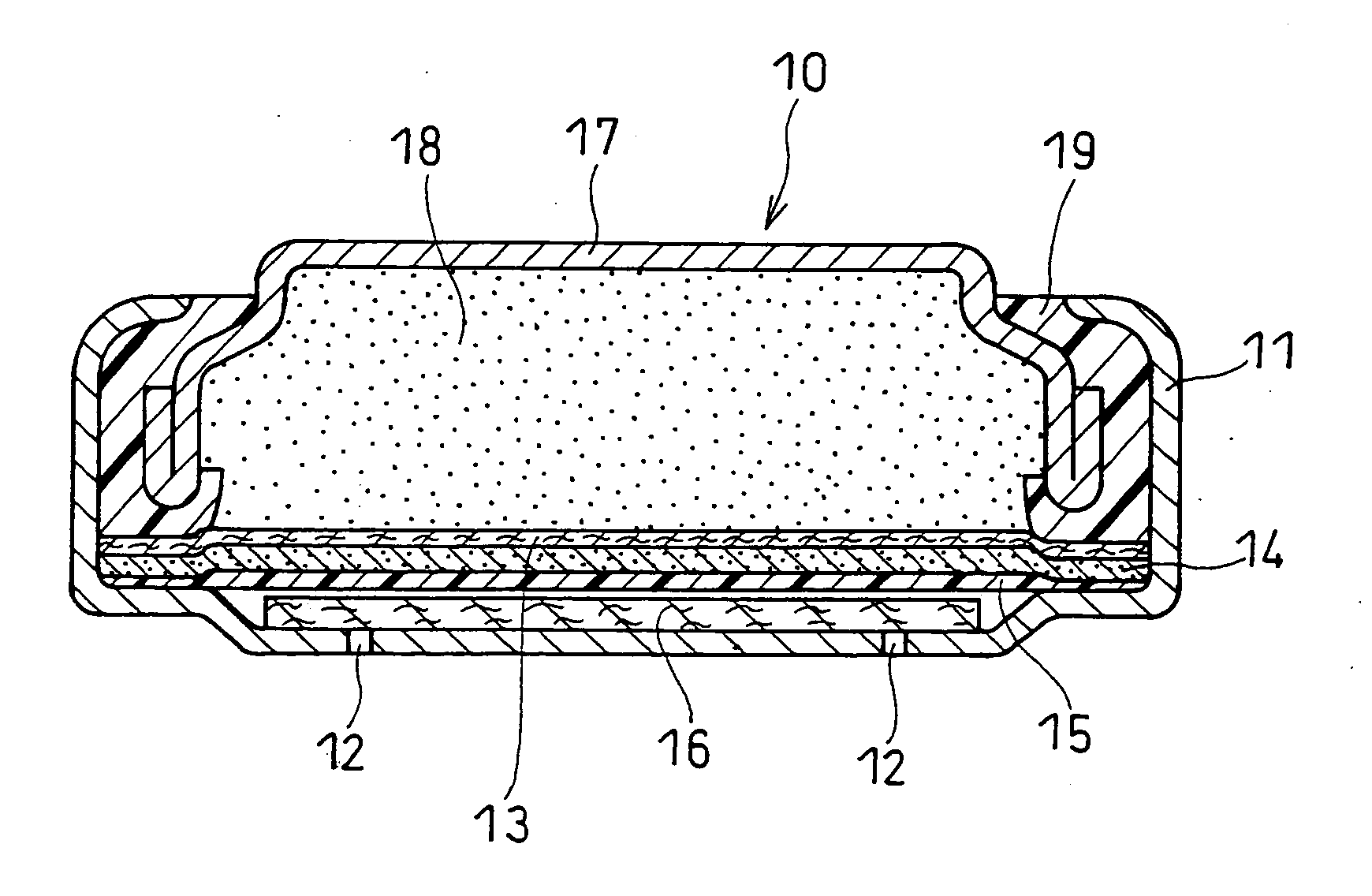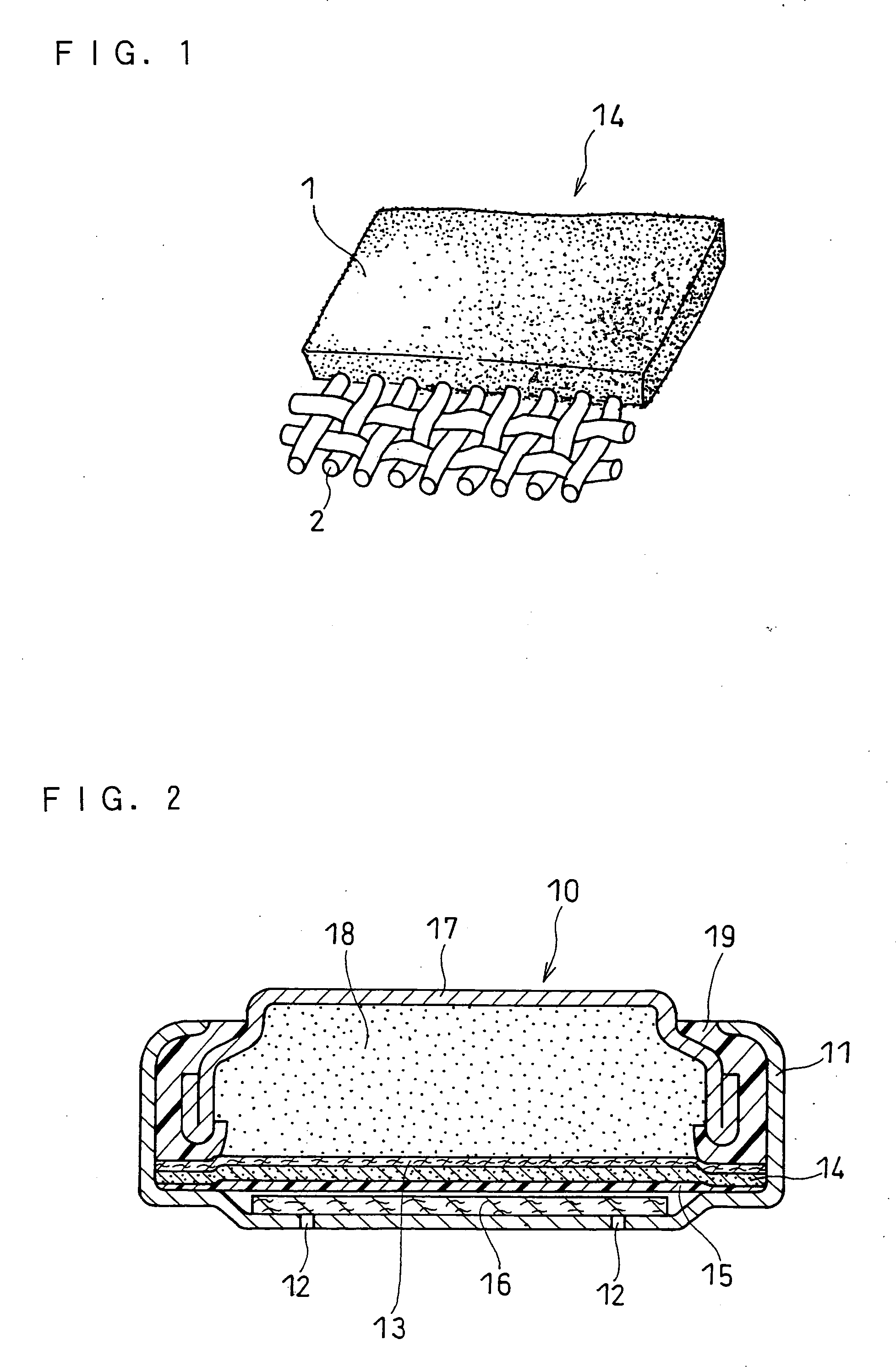Air battery and method for producing air electrode for air battery
- Summary
- Abstract
- Description
- Claims
- Application Information
AI Technical Summary
Benefits of technology
Problems solved by technology
Method used
Image
Examples
example 1
(Method of Preparation of Air Electrode)
[0044]FIG. 1 is a perspective view of the main part of an air electrode in this example. A current collector 2 is bonded to one face of a catalyst layer 1. An assembly 14 of the catalyst layer 1 and the current collector 2 is combined with a water-repellent film to form an air electrode. The water-repellent film is bonded to the opposite face of the catalyst layer 1 from the current collector.
[0045] The catalyst layer 1 of the air electrode is composed of the following materials. Coconut husk activated carbon powder was used as the oxygen-reducing catalyst. The coconut husk activated carbon powder had a specific surface area of 1500 to 1900 m2 / g and a median diameter of 2 to 7 μm. The median diameter as used herein was determined by laser diffraction / scattering particle size distribution analysis. The promoter for decomposing a product of oxygen reduction was a manganese oxide, namely Brownox (Mn3O4) available from Tosoh Corporation. Ketjen...
examples 2 to 21
[0057] Batteries of Examples 2 to 21 were fabricated in the same manner as in Example 1, except that air electrodes were prepared by varying the mixing ratios of the catalyst-layer-components and the weight ratio (b / a) as listed in Table 1.
[0058] In Examples 1 to 7, the ratio of the total content of the binder and fluorinated graphite to the catalyst layer and the porosity of the catalyst layer were kept constant, and the weight ratio (b / a) of the fluorinated graphite content (b) to the binder content (a) in the catalyst layer was varied.
[0059] In Examples 8 to 14, the weight ratio (b / a) and the porosity of the catalyst layer were kept constant, and the ratio of the total content of the binder and fluorinated graphite to the catalyst layer was varied.
[0060] In Examples 15 to 21, the weight ratio (b / a) and the ratio of the total content of the binder and fluorinated graphite to the catalyst layer were kept constant, and the porosity of the catalyst layer was varied.
PUM
 Login to View More
Login to View More Abstract
Description
Claims
Application Information
 Login to View More
Login to View More - R&D
- Intellectual Property
- Life Sciences
- Materials
- Tech Scout
- Unparalleled Data Quality
- Higher Quality Content
- 60% Fewer Hallucinations
Browse by: Latest US Patents, China's latest patents, Technical Efficacy Thesaurus, Application Domain, Technology Topic, Popular Technical Reports.
© 2025 PatSnap. All rights reserved.Legal|Privacy policy|Modern Slavery Act Transparency Statement|Sitemap|About US| Contact US: help@patsnap.com


